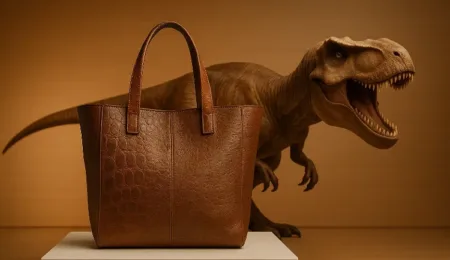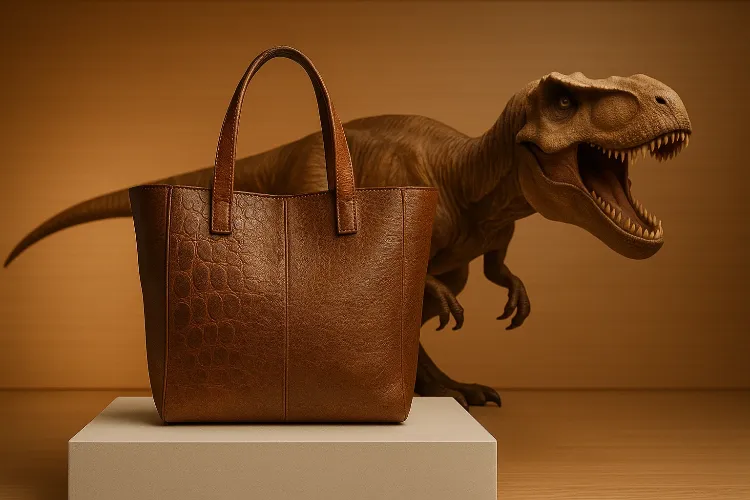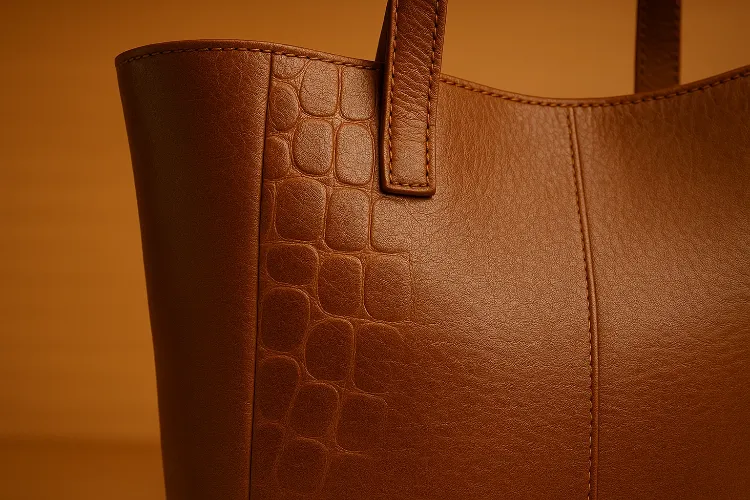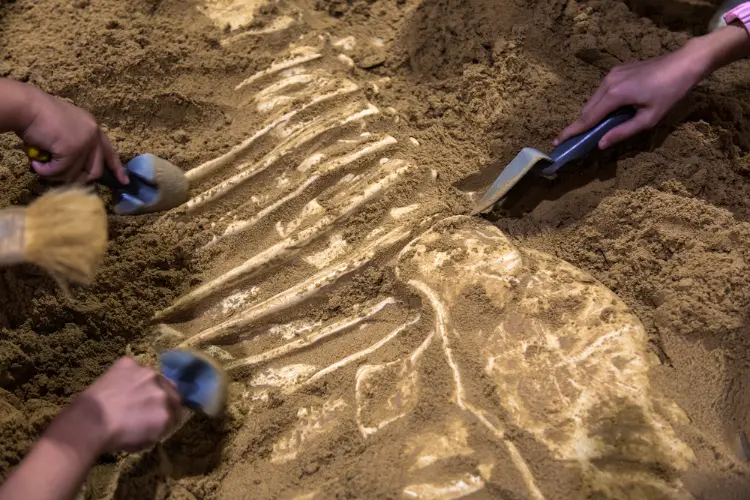Researchers Are Developing T. rex Leather from Fossilized Collagen

A group of researchers and designers is developing leather from T. rex DNA. While this sounds like leather will be an artifact for the museum, it is, in fact, for luxury handbags. But will the final product be really T. rex leather, or is it just clever branding?
The T. rex leather will be produced from collagen found in fossilized dinosaur bones, buried at least 66 million years ago.
VML, The Organoid Company, and Lab-Grown Leather Ltd. have collaborated to revolutionize the luxury leather segment. They are developing the world’s first prehistoric leather from the dinosaur species which last roamed the earth 66 million years ago.
As we don’t have intact T. rex DNA, the team will rely on collagen found in the fossilized bones to build synthetic DNA.
Collagen is a protein that gives skin structure and makes it firm and flexible. While the collagen in T. rex fossils is ancient and broken down, it can still be used as a rough model.
Collagen will be used to develop synthetic DNA by inferring its amino acid sequences. The synthetic DNA can instruct living cells to produce collagen. Researchers will use these instructions to grow cells that naturally make the material without needing any extra support structure.
As the synthetic DNA is built from T. rex collagen, researchers expect to produce leather from T. rex that is different from that grown from modern species.
While the plan sounds novel, some paleontologists are not completely sold. As no actual T. rex skin has ever been preserved well enough to copy, calling it “T. rex leather” might be a stretch.
According to them, collagen fragments available from T. rex fossils are minimal and heavily degraded. Most of the reconstruction will rely on educated guesses based on related modern species, like birds and reptiles.
While skeptics call the idea gimmicky, the research team calls it revolutionary.

Synthetic biology expert Tom Ellis finds the idea gimmicky at this stage. According to him, scientists don’t know enough about dinosaur genetics to accurately recreate T. rex collagen.
Even if they manage to grow leather using that idea, the final material probably will not be all that different from fake leather made from cow or chicken collagen.
The researchers behind the project are aware of the technique’s shortcomings. However, they consider the initiative revolutionary rather than fantasy.
They admit that while the final material won’t be genetically identical to authentic T. rex skin, it will be as close to T. rex leather as current technology allows.

Apart from skeptical dinosaur researchers, the primary challenge will be to accurately reconstruct ancient proteins from fragmented data.
If successful, we will have cruelty-free, sustainable, and biodegradable leather.
While lab grown leather is already an alternative to traditional tanning, a dinosaur-inspired leather bag might pull more crowds towards artificial, cruelty-free leather.
It’s still early days, and plenty could go wrong. But if the team pulls it off, we could have a T. rex handbag by the end of 2025.
Future milestones will include scaling the technology and exploring uses beyond fashion, including automotive interiors.
























